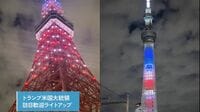
In launching his new “trade war,” President Donald Trump has been compelled to back down from his original intent to punish every country with a 25% tariff on steel and 10% aluminum. Nations supplying half of all US steel imports have received at least temporary exemptions.
Canada and Mexico received exemptions early on, at least while they negotiate with the US over a revision of the e North American Free Trade Agreement (NAFTA). Exemptions have also been announced for countries that either already have an FT A with the US, like Australia and Korea, or are negotiating one, like the European Union.
Brazil and Argentina also received exemptions. But Japan has not, despite all that Prime Minister Shinzo Abe has done to placate Trump.
While the refusal to exempt Japan is insulting to America’ leading ally in the Pacific, , Japan will be injured far more if Trump goes ahead with his reported intentions to slap punitive tariffs on as much as $60 billion in Chinese exports to the US, and when, as expected, China retaliates. That’s because so many products that China ships to the US contain made-in-Japan parts, like the chips and display screens in smartphones.
Understanding the conflicting pressures on Trump is critical to understanding, not only why he is so determined to launch a trade war, but also the limits that constrain his severity.
Interestingly, top executives on the Board of the American Petroleum obtained a personal meeting with Trump to press for an exemption just after holding their Board meeting at the Trump International Hotel in Washington. We’ve been told about other cases where foreign and domestic interests believed their access on a host of issues would be enhanced by spending money at a Trump property.
Political Benefits from Trade War Tactics
Trump’s voting base in key “swing states” loves his trade war tactics, and he feels the need to satisfy them to elevate his still-dismal approval ratings. Pounding on the trade issue gave Trump the White House by enabling him to win five Midwest “rust belt” states that traditionally vote Democratic.
As Trump recently told a group of Republican donors, “We can’t be taken advantage of anymore by these people that come in and dump everything in our country and destroy our mills and destroy our workers and destroy everything. When I did the tariffs, what most people understand what I’m doing is fighting for them.”
70% of Republican voters say they support his tariffs on steel and aluminum. Support drops to 29% among independents and 22% among Democrats. Even though the latter numbers may seem small, many of them are the swing voters who switched from Barack Obama in 2012 to Donald Trump in 2016.
Moreover, the labor unions that provide so much of the money and volunteers for Democratic candidates either support the tariffs outright or have refused to denounce them—even when they will hurt their own members. The President of the AFL-CIO federation supports the tariffs while the United Auto Workers has declined to comment. That’s because so many of their own members have swallowed the “America First” propaganda.
The reality, of course, is that trade did not take away those factory jobs and Trump’s trade war won’t bring them back. It’s true that steel jobs have plunged from 514,000 in 1980 to just 140,000 in 2016. But the primary reason that one worker can now produce as much steel as required five workers back in 1980. Not imports, but super-efficient “mini-mills” took most of those jobs away. Even if the US had not imported a single ingot, steel jobs would still have plunged.
That same forces have caused a plunge in Japan’s steel jobs despite Japan’s chronic trade surplus in steel. But Trump and his voters do not believe this data, preferring the illusion that “tough guy” tactics can rescue them.
Economic Pain from Trade War Tactics
What constrains Trump’s recklessness is the fact that Trump’s measures will end up hurting many of the very voters who now applaud them, as well as the big and small firms whose contributions fund the Republican Party.
More than 6.5 million people work in steel-consuming industries from finished metal products, to autos and aircraft, to machinery. That’s 46 workers for every one of the 140,000 people who labor in the steel mills. The steel-consuming sectors exported more than $500 billion worth of goods last year, 14 times the $35 billion of steel that the US imported.
As the tariffs raise the prices of these goods—a $300 hike in the price of a car according to the Wall Street Journal—sales will drop and jobs will be lost. And still more jobs will be lost as these tariffs hurt US exports of products that use steel and aluminum, such as aircraft, vehicles and machinery. Half of all US imports from Canada and Mexico and China consist of intermediate parts and supplies without which US producers will not be able to operate.
60 economists surveyed by the Wall Street Journal predicted Trump’s steel and aluminum tariffs, and retaliation by others, would cost the US a net loss of 137,000 jobs. A full-scale trade war would erase a whopping 845,000 jobs. (The forecasters widely differ; so there is no precision in these numbers.) Still, Trump has tweeted that trade wars “are easy to win.”
The reason Trump is backtracking to any degree is that big and small businesses that provide the donor base for the Republican Party are complaining loudly—sometimes to Trump directly—about the damage. It is notable that, in Trump’s speech to donors that we quoted above, the donors loudly applauded other steps Trump had taken, but stayed silent when Trump bragged about his trade moves.
Trump Backtracks
Initially, Trump opposed any exemptions for any countries, correctly predicting that any exemptions would lead to a flood of requests. He retreated on Canada—at least for now—when his supporters in the United Steelworkers union told him that it had nearly a quarter million members (including retirees) in Canada.
Trump has threatened to re-impose them if Canada and Mexico don’t give him what he wants in the talks around revising NAFTA. Prime Minister Justin Trudeau has counter-threatened to leave NAFTA rather than surrender to a bad deal.
Now, the Commerce Department has agreed to hear pleas for exemptions from US industries that cannot obtain the needed materials from US suppliers. One example mentioned in the press is a type of high-quality steel used in some tires.
Notably, the biggest tire-makers in the US are Goodyear, Bridgestone/Firestone, and Michelin, only one of which was born in the USA. Trump officials say that they want US firms to start making the needed product on US soil, but what will they do if it takes years to produce the proper factories? The outcome remains to be seen.
No one—not even Trump—knows how he will end up balancing the conflicting political and economic pressures.
The biggest threat to Japan would come if Trump goes ahead with his plans to impose punitive tariffs affecting as much as $60 billion worth of Chinese exports. The rationale for the move is complaints by US firms of intellectual property theft costing them that amount. Meanwhile, Trump has asked China to come up with a plan to reduce its trade surplus with the US by $100 billion, a 25% reduction.
China would surely retaliate, as it has in the past, and no one knows how far the mutual escalation will go. Japan and other Asian countries will be hit in the cross-fire. That’s because, for every dollar of manufactured goods that China ships to the US, 40 cents consists of machinery and parts that China imports from other countries. Half of that comes from countries in Asia. 7 cents consists of made-in-Japan products.
So, a US tariff of, say, 25% on $60 billion of Chinese exports to the US means a 25% tariff on $4 billion of Japanese exports to China. Some of these made-in-Japan products come to China indirectly, because of Asia’s highly interconnected supply chains. For example, for every $1 worth of Korean exports to China, 6% consists of machinery, parts and supplies that Korea has imported from Japan.
Now factor in Chinese retaliation and the impact on growth in the rest of Japan‘s customers in Asia and you can see how quickly the ripple effects will be magnified.
Tokyo Watching Korean Concessions
There may be a lesson for Japan in the concessions that South Korea made in order to gain an exemption. It’s enough so that Trump can tweet “victory” to his supporters, but not enough to make a noticeable change in US-Korea trade.
Korea agreed to limit shipments to 70% of recent levels, but steel accounts for just 3% of Korea’s exports to the US.
Seoul doubled to 50,000 of the number of cars (of each make) that can come in using US safety standards (as opposed to Korean rules). But this won’t make a difference because the Detroit Three have not even come close to the existing allotment. On the contrary, two-thirds of autos exported from the US to Korea were made by Japanese and German companies in their US plants.
The talk about currency “manipulation” is contained in an unenforceable side letter. In any case, Korea has not been intervening enough to meet the US Treasury’s definition of manipulation.
Washington wants Tokyo to negotiate a bilateral FTA, one in which Trump would certainly ask for more, and give less, than did Obama in the Trans Pacific Partnership (TPP) talks. If Korea is a model, it might be just enough for Trump to claim a victory.
However Japan decides to proceed on the steel/aluminum issue, it is the prospect of a US-China trade war that poses the real threat, and, on that issue, Tokyo has little leverage.



